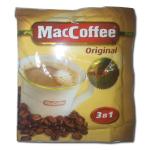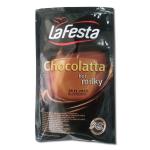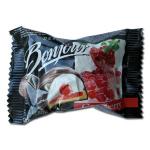
Other names for the additive (synonyms)
General Information
Additive E472e (diacetyltartaric and fatty acid esters of glycerol) belongs to the group of esters and glycerides of acids (additive E472) and is used in the food industry as an emulsifier.
In the USA and several other countries, additive E472e is better known as DATEM (an abbreviation for diacetyl tartaric acid ester of mono- and diglycerides).
Additive E472e consists of mixed esters of glycerol in which one or more hydroxyl groups of glycerol are esterified with diacetyl tartaric acid and fatty acids.
Diacetyltartaric and fatty acid esters of glycerol are obtained by reacting diacetyl tartaric anhydride with mono- and diglycerides of fatty acids, which in turn are derived from plant or animal sources.
The final product is a waxy solid or paste ranging in color from white to yellow.
Additive E472e readily disperses in hot water or fats and is used to stabilize texture in bakery and dairy products.
The main active components in emulsifier E472e are glycerol molecules with residues of stearic and diacetyl tartaric acids and a free secondary hydroxyl group. These molecules form a stable sticky network that gives products plasticity and uniformity.
In the food industry, additive E472e is more often obtained from plant sources — soybean, palm, and sunflower oils. These plant oils are often derived from genetically modified plants.
Effects on the Body
Benefits of Additive E472e
Esters of glycerol, diacetyl tartaric acid, and fatty acids do not have pronounced biologically active effects.
Risks of Additive E472e
Additive E472e is completely broken down in the human body into separate fats and acids, which are metabolized like other natural microelements.
Esters of glycerol, diacetyl tartaric acid, and fatty acids do not contain gluten, do not increase the glycemic index of foods, and rarely cause allergic reactions.
In very rare cases, intolerance or individual reactions may occur, especially in people allergic to soybean oil if it was used in the production of the additive.
EFSA (European Food Safety Authority) and JECFA (Joint FAO/WHO Expert Committee on Food Additives) did not find toxic effects in animal studies from consumption of additive E472e.
According to the final scientific evaluation by EFSA, additive E472e does not raise safety concerns at the reported levels of use.
Because diacetyl tartaric acid is formed during hydrolysis of additive E472e (tartaric acid), the EFSA Panel set a group acceptable daily intake (ADI) for additives E472d, E472e, and E472f at 240 mg/kg body weight per day, expressed as l(+)-tartaric acid.
Uses
Unlike other dough emulsifiers, additive E472e is not a form of starch complexes. Its main function is to provide dough plasticity. Usually, this plasticizer additive is used in dough at levels from 0.3 to 0.5% of the total flour weight.
Additive E472e is used in firm bread varieties, cookies, instant coffee beverages, and ice cream. It imparts uniformity, viscosity, and plasticity to various food products. Thanks to additive E472e, products stale more slowly.
Legal Status
Additive E472e is included in the list of permitted food additives in Ukraine, the EU, and many other countries.
Use of the additive DATEM is approved by the European Food Safety Authority (EFSA) and the U.S. Food and Drug Administration (FDA).



